It was summer in Hawaii and we decided that the family would move to the island of Molokai to raise bees and harvest honey as a family business.
Or, at least that’s what we told the kids right before we put them in front of the camera.
We hope you like our bee movie! The mockumentary style covers up a lot of our errors, and we threw in a few intentional goof-ups along the way. The result, we hope, is a comedy.
Molokai Vacation Location
I never make ideas, I only find ideas. It’s true that we did have a few bees in the pool on our summer vacation and it was my wife Cindy came up with idea of a family honey business mockumentary.
Being on vacation and considering the slower “Molokai time” of the small island, I enthusiastically jumped on board, interviewing the kids before they could figure out what was going on.
I shot the main interview footage one afternoon on our Molokai vacation using only a handheld iPhone 5 with available light. There was really no script or plan for the story at that point, so I chose some provocative questions and hoped for the best.
The Kaneshiro family and Molokai Meli were real, of course, and we did find them only after we began filming — on the Intenet. They were very gracious for not only letting me interview them, but also in sending me a few dozen still images of bees and their hives. While in Hawaii, I also tracked down the producer of a local documentary who was kind enough to let me use his secondary bee footage that you see in the cutaways.
Story Development
Back in Virginia, I picked through all the vacation footage and started piecing it together into a kind of narrative.
I had begun to build a story around the best of the kids’ reactions, but it was a bit flat and disjoint. The kids’ answer to the various interview questions were pretty good, but the story needed some kind of structure to tie it together.
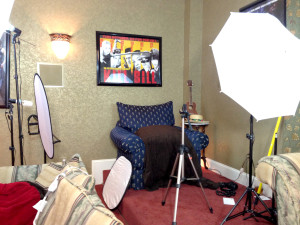
Rather than using a narrative voice-over, I wanted the film to be of the style where the interviewees tell their entire story, prompted only occasionally by the interviewer. While Mason, Cassie and Maddie were completely unscripted in Hawaii, I had some direction in mind when I filmed Cindy that fall back in Virginia.
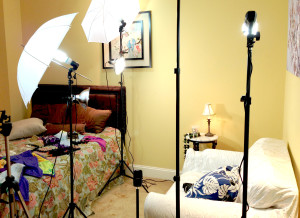
The Virginia shoots were much later in the season and we were lucky to capture Cindy’s video outside before the weather turned gray and we would have to use interiors and need good lighting. That winter, Hailey and I wrote scripted scenes for the two of us around indoor settings and created some sets that would round out the story.
Post Production
The most fun on this project was getting to learn a number of new production techniques. Here’s a brief overview of some of the things we did.
Color Correction
Primary color correction is the work to adjust all of the visual assets (footage and stills) so that they have the proper white & black levels as well as good, balanced color. Despite my efforts to set exposure and white-balance in Hawaii, I found that not only did light levels and color shift between interview locations — but sometimes even between questions with the same subject in the same location! We learned how to correct for this as best we could to make the shots look similar.
I also found that some subjects would blend into the background too much, tempting the viewer’s eyes to wander around and lose their attention to the scene. For these, I created vignettes by subtly dimming the edges of the shot in order to highlight the subject.
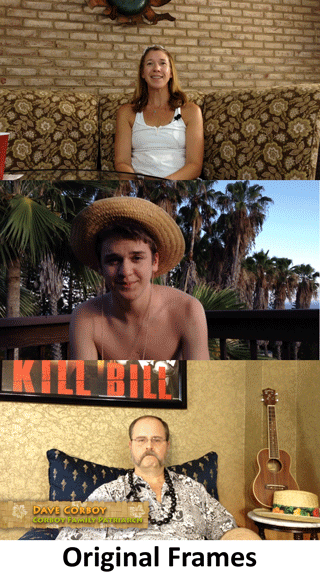
We also did some secondary color correction to tone-down bright or distracting things in the background and, at the end of it all, added the overall color grading that gives the film the brownish Molokai cast.
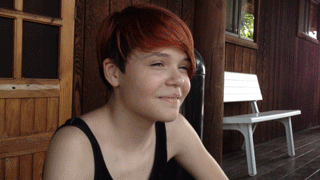
Image Stabilization
Because I had shot the Molokai interviews using a handheld camera, the shots looked pretty awful bouncing around as I posed my questions. I used some video tools to stabilize these shots, giving the look of the camera mounted on a tri-pod. The ravine pan shot is a great example of what was originally a very shaky handheld video. If you want to see how the raw interview frames looked before stabilization, take a look at the post-credits clip of Mason.
Sound
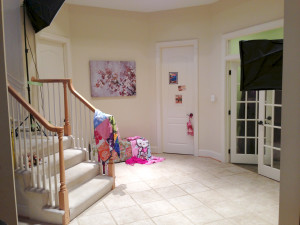
There was a lot of sound work. While the Molokai location sound was captured in-camera, all the “studio” sound was recorded separately from the video using lav and shotgun mics that were synced or mixed during the editing process. All of the off-camera voices, including Hailey’s behind the door, were recorded separately and mixed in later.
While about half of the bird sounds are real, the other half were added from unused Molokai footage to expand the sound field. I even did a small amount of foley for the sound of my slippers as I follow Hailey into “her room,” which was actually our basement gym.
All sound clips at a minimum had to be converted to mono, cleaned of noise and compressed in dynamic range. Even before music was added, the audio project consisted of over 100 clips in 12 tracks of audio.
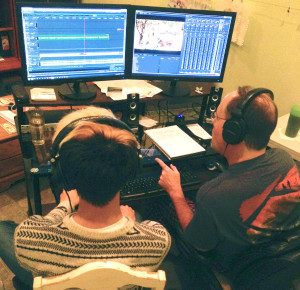
Joe Ross, the re-recording mixer, did an incredible job tweaking every audio clip and blending the tracks together into the final mix. I thought I had done a pretty good job with the rough tracks and was amazed at how much he was able to improve the overall composition.
Music
Music rights are a funny thing. There are many many things you can get away with on YouTube, but using other people’s music is not one of them. I found out how good YouTube is handling music rights when I first uploaded Sector 42 — The Space Movie. Within 30 seconds of uploading, YouTube had computationally identified some of the music as having had a rights claim against it. I did have a license from the music publisher and so I had to work with them directly to confirm this to YouTube before the video was released.
Finding and licensing Hawaiian music for this project proved much more difficult. After many hours on the Internet dealing with inflexible licensing companies wanting hundreds of dollars per song, I finally found Music2Hues. They had some great original Hawaiian music and were kind enough to license me everything I needed for a fraction of the cost of just one of the more traditional tracks.
Goof-ups
We learned that a simple iPhone can capture some astoundingly good high-definition footage. We also learned that when the older iPhone 5 is coerced (via FiLMiC Pro) to capture raw frames of video in the hot sun, it will overheat and completely lose it’s audio sync. Also, bring a tri-pod.
I completely screwed up Hailey’s shoot by recording the entire thing at 30fps, rather than the film rate of 24fps we were using. This turned out to be an almost unsolvable problem for reasons I didn’t initially understand and fixing it was an interesting but longer story that I’d love to tell another time.
I also learned that if parts of your image are so bright that they exceed the camera’s ability to record them properly, they cannot be fixed in post-production. This ruined some additional pool and bee shots I would have liked to include. Some of Mason’s shots couldn’t be properly light-leveled and appear much too bright as a result. A simple bed sheet to diffuse the sunlight would have fixed this.
We removed dozens of squeaks, hums, and car sounds to make the locations sound more pristine. We shut off furnaces and refrigerators back in Virginia to get cleaner sound. We used blankets and pillows to make a recording studio and learned that it’s virtually impossible to get rid of location wind noise that spans the vocal range.

We removed fingers that obscured the camera lens, re-framed shots, restored “lost” audio and, in general, experienced all the newbie mistakes in making a movie. Along the way, we also made graphics and titles and managed to meet a lot of interesting people.
All in all, another great family project!
